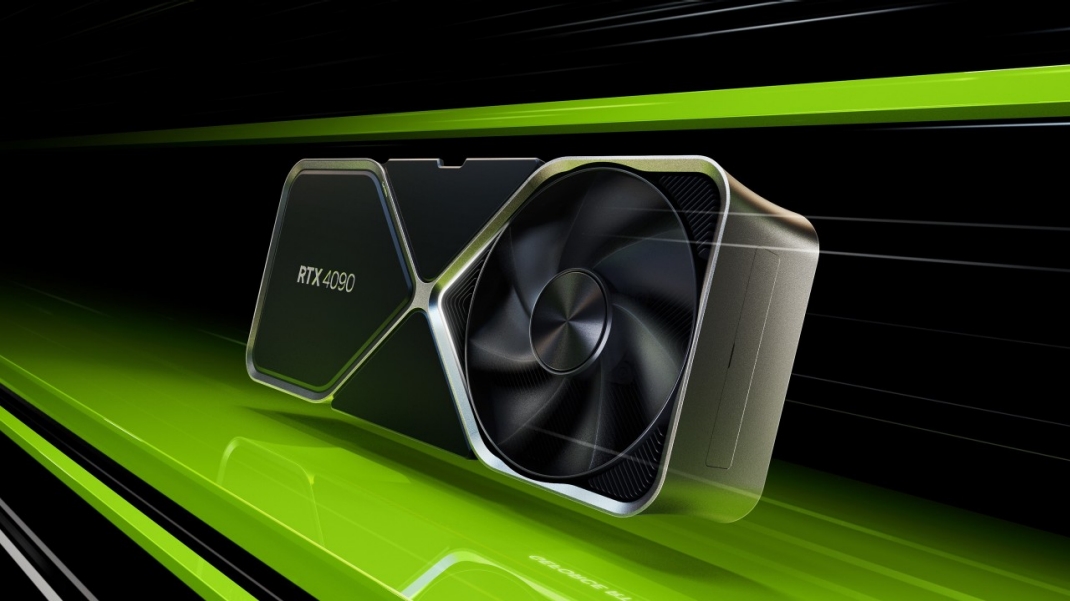Do You Really Need a 5090 for Gaming? The Performance, Power, and Price Reality Check
Section 1: The Siren Song of the Flagship: Enter the 5090
The relentless march of graphics technology ensures one constant: the hype surrounding the next flagship GPU. Each generation brings whispers, leaks, and eventually, the unveiling of a new “halo” product – a graphics card promising unprecedented performance, destined to top benchmark charts and ignite desire among PC enthusiasts. The upcoming NVIDIA GeForce RTX 5090 is the latest inheritor of this mantle, poised to succeed the already formidable RTX 4090 and redefine the upper limits of consumer graphics power. Built upon the foundation laid by its predecessors, it represents the anticipated pinnacle of gaming performance, promising smoother frame rates, higher resolutions, and more immersive ray-traced worlds than ever before.
Yet, this relentless pursuit of the absolute best comes at a steep price. With Manufacturer’s Suggested Retail Prices (MSRPs) for flagship cards like the RTX 5090 potentially reaching or exceeding $1,999 , and real-world street prices often inflated significantly higher due to demand and market dynamics , a critical question arises. Is this bleeding-edge power, this undisputed benchmark crown, actually necessary for a truly fantastic gaming experience? Or does chasing the flagship represent an exercise in rapidly diminishing returns, saddling gamers with excessive costs – both upfront and ongoing – for performance gains they may not fully utilize or even perceive? This analysis aims to cut through the marketing buzz and confront the practical realities.
To achieve this, we will dissect the performance profile, power demands, and tangible running costs associated with the current top-tier consumer GPU, the NVIDIA GeForce RTX 4090, using it as a reasonable proxy for the performance and power characteristics of the upcoming RTX 5090’s class. We will scrutinize its real-world gaming capabilities across different resolutions, paying close attention to where its advantages shine and where they fade. Crucially, we will delve into its significant power consumption and calculate the often-overlooked impact on electricity bills, comparing these findings against highly capable, yet more power-efficient and cost-effective alternatives available today. The goal is to provide gamers with the data and context needed to make an informed decision, moving beyond the allure of the flagship to the practicalities of performance, power, and price.
Section 2: Benchmarking the Beast: Performance vs. Practicality
The appeal of a flagship GPU like the RTX 4090 is most evident when pushing games at the demanding 4K resolution. Here, its capabilities are undeniable. Benchmark data consistently shows the RTX 4090 establishing a commanding lead over previous-generation flagships such as the RTX 3090 Ti and RTX 3090, as well as AMD’s top offerings from the previous generation like the RX 6950 XT. Reviews highlight performance uplifts averaging around 55-60% compared to the RTX 3090 Ti at 4K ultra settings across various game suites. In specific titles, the gains can be even more pronounced; for instance, in Rainbow Six Extraction at 4K, the RTX 4090 delivered a 64% uplift over the 3090 Ti, while in F1 2021 with ray tracing, the margin extended to 71%. This level of performance allows the RTX 4090 to deliver truly high-refresh-rate experiences at 4K, pushing demanding titles like Cyberpunk 2077 comfortably past the 60 frames per second (FPS) threshold at maximum settings, a feat that often eludes even previous high-end cards. Furthermore, its prowess extends to ray tracing workloads, where its architectural improvements result in significant gains, such as being 76% faster than the RTX 3090 Ti in ray tracing tests at 4K ultra. This raw power solidifies the flagship’s position as the undisputed king for gamers targeting the highest fidelity at 4K resolution.
However, the narrative changes significantly when examining performance at lower resolutions like 1440p and 1080p. While still the fastest card, the RTX 4090’s relative advantage begins to shrink, often dramatically. This phenomenon is primarily due to CPU bottlenecks. At lower resolutions, the GPU can render frames faster than the CPU can prepare them, meaning the processor becomes the limiting factor, preventing the GPU from reaching its full potential. Consequently, the massive performance leaps seen at 4K are curtailed. Reviews note that the RTX 4090’s average lead over the RTX 3090 Ti drops to around 28% at 1440p ultra, and further diminishes to just 16% at 1080p ultra. In some CPU-bound titles or scenarios with less optimized drivers for the newer architecture, the gains can become marginal, or performance might even regress compared to the previous generation. Examples include Flight Simulator running slower on the 4090 than the 3090 Ti at 1440p in early tests, or Far Cry 6 and Horizon Zero Dawn showing only single-digit percentage advantages at that resolution. Even with a potent CPU like the Ryzen 7 5800X3D, limitations become apparent at 1440p in titles like Horizon Zero Dawn and Cyberpunk 2077. This leads to stark warnings from reviewers: purchasing an RTX 4090 solely for 1080p gaming is strongly discouraged, as the performance benefits over much cheaper cards become minimal. The substantial investment in a flagship GPU simply isn’t justified if the rest of the system or the target resolution prevents it from stretching its legs.
This performance plateau at lower resolutions brings upper-mid-range GPUs into sharp focus as compelling, “sensible” alternatives for high-performance gaming. Cards like the NVIDIA GeForce RTX 4070 Super and AMD Radeon RX 7900 GRE offer a remarkable balance of power and price. Notably, the RTX 4070 Super delivers performance often on par with, or even exceeding, the previous generation’s flagship, the RTX 3090, while consuming significantly less power and costing considerably less. These modern mid-range contenders provide excellent frame rates at 1440p, the resolution favoured by many enthusiast gamers. The choice between them often comes down to specific needs and preferences. The RTX 4070 Super generally holds an edge in ray tracing performance and benefits from NVIDIA’s widely supported DLSS upscaling and frame generation technologies. The RX 7900 GRE, conversely, often competes strongly in traditional rasterization performance, sometimes pulling ahead of the 4070 Super, particularly at 4K in certain titles, and typically offers more VRAM (16GB vs 12GB), which could offer better longevity as game demands increase. Benchmark comparisons show these cards trading blows, delivering smooth gameplay in demanding titles like Cyberpunk 2077, Alan Wake 2, and Starfield at 1440p. Their ability to deliver a high-fidelity experience at resolutions below 4K makes the extreme cost of a flagship card seem increasingly unnecessary for a large segment of the gaming audience.
The data reveals a clear pattern: the justification for investing in a flagship-tier GPU like the RTX 4090 (and presumably the 5090) is heavily contingent on the user’s target resolution and refresh rate. Its dominance is unquestionable for pushing the boundaries of 4K gaming at high refresh rates, or for venturing into even more demanding scenarios like 8K. However, as resolution decreases to 1440p or 1080p, the GPU’s relative advantage shrinks substantially. This isn’t merely about achieving lower frame rates; it’s that the percentage gain over more affordable cards diminishes significantly due to limitations imposed by the CPU and game engines themselves. Much of the flagship’s potential horsepower remains untapped, unable to translate into a proportionally better gaming experience. Therefore, the perceived value and practical necessity of such a powerful card decline rapidly for users not specifically targeting the most demanding display scenarios.
Simultaneously, the performance capabilities of GPUs in the upper-mid-range segment have matured considerably. Cards like the RTX 4070 Super and RX 7900 GRE now offer performance levels that rival or surpass the previous generation’s top-tier offerings, such as the RTX 3090. Given that the RTX 3090 was considered a high-end 4K capable card just a short time ago , this signifies that the performance readily available in the $550-$600 price bracket is now more than sufficient for delivering excellent, high-fidelity gaming experiences at 1440p and below. These cards consistently produce high frame rates at ultra settings in modern, demanding games. This reality creates a high performance plateau that satisfies the needs of most enthusiast gamers, making the substantial financial leap required to acquire a $1600+ flagship GPU a much more difficult proposition based solely on gaming requirements at mainstream enthusiast resolutions.
Table 1: Comparative Gaming Benchmarks (Average FPS)
| Game Title | Resolution | RTX 4090 Avg FPS | RTX 4070 Super Avg FPS | RX 7900 GRE Avg FPS | Data Source(s) |
|---|---|---|---|---|---|
| Cyberpunk 2077 | 1440p Ultra | 145 | ~80* | ~75* | |
| Cyberpunk 2077 | 4K Ultra | 61 | ~40* | ~38* | |
| Horizon Zero Dawn | 1440p Ultra | 212 (CPU Ltd) | ~160* | ~155* | |
| Horizon Zero Dawn | 4K Ultra | 157 | ~105* | ~100* | |
| Ratchet & Clank: RA | 1440p Very High | ~110* | 96 | 84 | |
| Ratchet & Clank: RA | 4K Very High | ~100* | 55 | 59 |
Note: FPS figures marked with (*) are estimated based on relative performance differences described in source snippets or derived from adjacent card benchmarks, as direct side-by-side comparisons for all three cards in every title/setting were not always available in a single source. CPU limitations can affect 1440p results for the RTX 4090.
Section 3: The Kilowatt Question: Powering Your Playtime
Beyond raw performance, a critical factor often overlooked in the pursuit of the ultimate gaming experience is power consumption. Flagship GPUs, exemplified by the RTX 4090, are notoriously thirsty components. Benchmarks and reviews consistently show the RTX 4090 Founders Edition drawing close to its official 450W Total Board Power (TBP) rating under heavy load. Measured average power consumption during demanding 4K gaming, such as in Metro Exodus, hovers just under 440W , while stress tests like FurMark can push it even higher, into the 460-470W range. Even during typical AAA gaming at 4K, power draw can frequently peak towards 400W, although it can vary depending on the specific game and GPU utilization. Idle power is relatively low at around 33W , but the peak demand necessitates robust system infrastructure. This includes high-wattage power supply units (PSUs) – typically 850W at a minimum, with 1000W or more often recommended to provide adequate headroom and ensure stability. Furthermore, these cards utilize the specific 12VHPWR power connector, often requiring adapters for older PSUs.
In stark contrast, the upper-mid-range alternatives offer significantly better power efficiency. The NVIDIA RTX 4070 Super, despite offering performance comparable to the previous-gen RTX 3090, operates with a much lower TBP of 220W. Measured average gaming power consumption for the 4070 Super typically falls between 190W and 210W. Similarly, the AMD RX 7900 GRE has a TBP of 260W , with measured average gaming power draw generally landing between 255W and 265W across various tests and resolutions , although some factory overclocked models can draw slightly more. This represents a substantial reduction in power demand compared to the RTX 4090 – often 200W or more just for the GPU itself. While the RTX 4090 demonstrates improved efficiency relative to its performance class compared to the RTX 3090 Ti (delivering significantly more performance for similar power draw) , the overall performance-per-watt advantage within the current generation clearly lies with the lower-power Ada Lovelace cards like the 4070 Super. AMD’s RDNA 3 cards, including the 7900 GRE, generally lag behind NVIDIA’s 40-series in efficiency metrics. Enthusiasts can further optimize power draw through undervolting, a technique that reduces the voltage supplied to the GPU, often maintaining near-stock performance while significantly cutting power consumption and heat output, particularly effective on high-end cards.
However, focusing solely on the GPU’s power draw provides an incomplete picture. The true energy cost is determined by the total system power consumption. A high-end gaming PC built around an RTX 4090 is typically paired with other powerful components, such as a high-core-count CPU (which can draw 100-150W or more under load ), substantial amounts of RAM, multiple storage drives, and elaborate cooling solutions (fans, liquid cooling pumps) and RGB lighting. These ancillary components contribute significantly to the overall power budget. Estimates suggest a high-end gaming rig featuring an RTX 4090 could easily pull 600W to 750W, or potentially even more, from the wall during intense gaming sessions. In contrast, an upper-mid-range system built around an RTX 4070 Super or RX 7900 GRE, likely paired with a more modest but still capable CPU (e.g., Ryzen 7 or Core i5), might consume closer to 350W to 500W under similar gaming loads. The GPU remains the single largest power consumer , but the cumulative draw of the entire system is what dictates the electricity cost.
While NVIDIA’s Ada Lovelace architecture brought significant efficiency improvements generation-over-generation, allowing the RTX 4090 to deliver substantially more performance than the RTX 3090 Ti at a similar power level , the absolute difference in power consumption between the flagship tier and the performance sweet-spot (upper-mid-range) remains vast. A system built around an RTX 4090 can readily consume 200W to 300W more than a comparable system equipped with an RTX 4070 Super under typical gaming loads. This significant wattage gap is a critical factor because electricity costs are calculated based on the total energy consumed (kilowatt-hours), irrespective of the performance achieved per watt relative to older hardware. The sheer difference in absolute power draw directly translates into higher running costs for the flagship tier compared to more moderate, yet still highly capable, alternatives.
Furthermore, it is crucial to look beyond the graphics card’s specifications when assessing power draw. The Total Board Power (TBP) or Thermal Design Power (TDP) figures often cited are useful guidelines, but the real-world electricity cost stems from the entire system’s consumption under load. High-end GPUs like the RTX 4090 are frequently paired with equally power-hungry CPUs, extensive RAM configurations, multiple high-speed storage devices, and sophisticated cooling systems, all of which add to the overall energy demand. An enthusiast opting for a top-tier CPU alongside their flagship GPU will face a considerably higher electricity bill than someone pairing the same GPU with a more power-frugal processor and a more streamlined system configuration. This synergistic effect means the financial penalty associated with running a flagship system isn’t solely attributable to the GPU; it’s amplified by the ecosystem of components typically chosen to accompany such a high-end card, widening the running cost gap compared to more balanced mid-range builds.
Table 2: Estimated GPU & System Power Consumption (Watts)
| Component Tier | GPU Model | Avg. Gaming GPU Power (W) | Estimated Avg. Gaming Total System Power (W) | Data Source(s) |
|---|---|---|---|---|
| High-End | RTX 4090 | ~440 W | ~650 – 750 W | |
| Upper-Mid-Range (Nvidia) | RTX 4070 Super | ~200 W | ~375 – 475 W | |
| Upper-Mid-Range (AMD) | RX 7900 GRE | ~260 W | ~425 – 525 W |
Note: Estimated Total System Power includes the GPU power plus estimates for a modern mid-to-high-end CPU (e.g., 100-150W), motherboard, RAM, SSD, cooling, and peripherals (e.g., 50-100W total). Actual consumption will vary based on specific components, game load, and system settings.
Section 4: Counting the Cost: Your Electricity Bill Shock
Understanding the power consumption figures in Watts is the first step; translating that into monetary cost requires understanding how electricity is billed. Utility companies charge based on energy consumed over time, measured in kilowatt-hours (kWh). The calculation is straightforward: the power draw of your device in kilowatts (kW) multiplied by the duration of use in hours equals the energy consumed in kWh. Remember that 1000 Watts equals 1 Kilowatt.
To calculate the real-world running cost, we need the price per kWh. Based on the UK’s energy regulator Ofgem, the price cap rate for electricity for a typical household paying by Direct Debit between 1 April and 30 June 2025 is 27.03 pence per kWh, which is equivalent to £0.2703 per kWh. This figure includes Value Added Tax (VAT) and represents an average across England, Scotland, and Wales; actual rates can vary slightly by region and payment method. While daily standing charges also contribute to the overall bill, the per-kWh rate is the component directly affected by the electricity usage of devices like a gaming PC.
Using this electricity price and the estimated total system power consumption figures from Table 2, we can calculate the approximate cost per hour of gaming for each system tier:
- High-End System (e.g., RTX 4090 based, estimated 700W average):
- Power in kW: 700W/1000=0.7kW
- Cost per hour: 0.7kW×£0.2703/kWh≈£0.189 (approx. 18.9 pence per hour)
- Upper-Mid-Range System (e.g., RTX 4070S/7900GRE based, estimated 450W average):
- Power in kW: 450W/1000=0.45kW
- Cost per hour: 0.45kW×£0.2703/kWh≈£0.122 (approx. 12.2 pence per hour)
While the hourly cost difference might seem small (around 6-7 pence), it accumulates based on gaming habits. Let’s extrapolate these costs over typical weekly gaming durations. While a 2021 survey suggested average gamers play 8.6 hours per week , enthusiasts likely dedicate more time. Considering 10, 15, and 20 hours per week scenarios:
- Monthly Cost (assuming ~4.33 weeks per month):
- @ 10 hours/week:
- High-End: £0.189/hr * 10 hrs/wk * 4.33 wks/mo ≈ £8.18 per month
- Upper-Mid: £0.122/hr * 10 hrs/wk * 4.33 wks/mo ≈ £5.28 per month
- Monthly Difference: ~£2.90
- @ 15 hours/week:
- High-End: £0.189/hr * 15 hrs/wk * 4.33 wks/mo ≈ £12.27 per month
- Upper-Mid: £0.122/hr * 15 hrs/wk * 4.33 wks/mo ≈ £7.93 per month
- Monthly Difference: ~£4.34
- @ 20 hours/week:
- High-End: £0.189/hr * 20 hrs/wk * 4.33 wks/mo ≈ £16.36 per month
- Upper-Mid: £0.122/hr * 20 hrs/wk * 4.33 wks/mo ≈ £10.57 per month
- Monthly Difference: ~£5.79
- @ 10 hours/week:
These calculations align in magnitude with user estimates and examples found in various sources, which often place monthly gaming PC running costs anywhere from £5 to over £20, depending on hardware, usage, and electricity rates.
The seemingly modest hourly cost difference between a flagship system and a more moderate one begins to look more substantial when viewed over the typical ownership period of a graphics card, which often spans two to four years. An extra £4 to £6 per month, as calculated in our 15-20 hours/week examples, accumulates to approximately £50 to £70 per year. Over a three-year lifespan, this equates to an additional £150 to £210 in electricity costs alone. This “running cost tax” effectively increases the total cost of ownership for the flagship GPU, adding a recurring expense on top of its already significantly higher purchase price. This long-term financial implication is frequently overlooked during the initial purchase decision , yet it materially affects the overall value proposition, making the initially cheaper upper-mid-range card even more economical throughout its operational life.
It is also essential to recognize that the impact of this running cost difference is highly sensitive to individual circumstances. The calculations presented use average system power estimates and a specific UK electricity rate for a defined period. Gamers who spend significantly more time playing – perhaps 30 or 40 hours per week – will see these monthly and annual cost differences multiply proportionally, making the financial burden of a high-power system much more acute. Conversely, those who game infrequently will experience a smaller absolute cost difference. Furthermore, electricity prices vary considerably by region and country. The UK rate used (£0.27/kWh) is relatively high compared to some other parts of the world. In regions with substantially cheaper electricity, the monetary difference between running a high-end and mid-range system would be less pronounced, potentially lessening the running cost argument against the flagship tier. Conversely, in areas with even higher energy prices, the economic case for choosing a more power-efficient GPU becomes overwhelmingly stronger. Therefore, the significance of the running cost penalty is not a fixed value but fluctuates based on personal usage patterns and local energy pricing realities.
Table 3: Estimated Electricity Running Cost Comparison (UK – Apr-Jun 2025 Rate: £0.2703/kWh)
| System Tier | Estimated Avg. System Power (W) | Cost per Hour (£) | Cost per Month @ 10 hrs/week (£) | Cost per Month @ 20 hrs/week (£) | Estimated Annual Cost @ 15 hrs/week (£) |
|---|---|---|---|---|---|
| High-End (RTX 4090 based) | ~700 W | £0.189 | £8.18 | £16.36 | £147.30 |
| Upper-Mid-Range (4070S/GRE based) | ~450 W | £0.122 | £5.28 | £10.57 | £95.12 |
| Difference | ~250 W | £0.067 | £2.90 | £5.79 | £52.18 |
Note: Calculations based on average power estimates from Table 2 and the Ofgem price cap rate of £0.2703/kWh for Direct Debit customers (Apr-Jun 2025). Monthly costs assume ~4.33 weeks per month. Annual cost based on 15 hours/week average for 52 weeks.
Section 5: The Verdict: Is the Flagship Tax Worth Paying?
Synthesizing the performance benchmarks, power consumption data, and running cost analysis paints a clear picture. Flagship GPUs like the RTX 4090, and presumably its successor the RTX 5090, undeniably offer the pinnacle of gaming performance, particularly delivering unmatched experiences at 4K resolution with maximum settings and ray tracing enabled. However, this peak performance comes bundled with significant drawbacks: exorbitant purchase prices often exceeding $1,600-$2,000 MSRP and climbing much higher in the retail market , rapidly diminishing performance returns at the more common 1440p and 1080p resolutions due to CPU bottlenecks , substantially higher power consumption often demanding system upgrades like larger PSUs , and a demonstrably higher electricity bill that accumulates over the card’s lifespan (Section 4).
When evaluating the overall value proposition, the argument against the flagship becomes compelling for a vast majority of gamers. The substantial premium paid – both upfront and through ongoing electricity costs – often does not translate into a proportionally better experience, especially for those not gaming exclusively at 4K/144Hz+. Upper-mid-range graphics cards, such as the RTX 4070 Super and RX 7900 GRE, represent a much more balanced investment. They deliver performance capable of handling demanding games smoothly at 1440p and even offering playable 4K experiences, often rivaling the previous generation’s flagships, but at a fraction of the cost and with significantly lower power demands. Metrics like “performance per dollar” or “value for money” consistently show high-end cards scoring lower than their mid-range counterparts, indicating that users pay a disproportionate premium for the final increments of performance. While early adopters of the RTX 4090 might have perceived good value due to its significant generational leap at launch , the current market realities, inflated prices, and the stark running cost differences challenge that perception for potential 5090 buyers.
This is not to say that flagship GPUs have no place. A niche audience exists for whom the absolute best is either necessary or simply desired. This includes:
- Hardcore 4K Enthusiasts: Gamers with high-refresh-rate 4K monitors (144Hz+) who demand maximum visual fidelity and the highest possible frame rates in every title.
- Early Adopters & Future-Proofers: Individuals aiming for emerging technologies like 8K gaming or demanding next-generation VR experiences, where maximum graphical horsepower is paramount.
- Professional Users: While dedicated workstation cards (like the RTX 6000 Ada ) are typically recommended, some professionals in fields like machine learning or 3D rendering might find the raw compute power of a consumer flagship advantageous, especially considering the price difference compared to professional GPUs.
- Budget-Unconstrained Enthusiasts: Gamers for whom cost is not a primary concern and who simply want the fastest hardware available, regardless of diminishing returns or running costs.
For everyone else, a more pragmatic approach is advisable. Before investing in a top-tier GPU, consider the following:
- Assess Real Needs: Honestly evaluate your primary gaming resolution, monitor refresh rate, and the types of games you play most often. Avoid overspending on a 4K-centric card if you primarily game at 1440p or 1080p.
- Consider the Sweet Spot: Investigate GPUs in the upper-mid-range ($500-$800 price bracket), as this segment currently offers the most compelling blend of high performance, reasonable price, and efficiency.
- Factor in Total Cost of Ownership: Look beyond the sticker price. Use the estimated running costs (Table 3 provides a UK-based guide) to understand the long-term financial implications of your GPU choice.
- Verify System Compatibility: Ensure your existing power supply unit has sufficient wattage and the necessary connectors to support your chosen graphics card. A flagship GPU might necessitate a PSU upgrade, adding further cost.
- Explore Efficiency Options: If power consumption, heat, or noise are concerns, consider GPUs known for efficiency. Techniques like undervolting can also significantly reduce power draw and heat output with minimal performance impact.
A subtle but pervasive issue within the PC hardware landscape is the normalization of excess. The constant marketing cycle and enthusiastic coverage surrounding flagship product launches often cultivate a perception that anything less than the absolute best constitutes a significant “compromise”. This narrative can pressure gamers into purchasing hardware far exceeding their actual needs, leading them to overlook more practical, cost-effective solutions that would still provide an outstanding gaming experience. The impressive, but often context-lacking, benchmark numbers (“monstrous,” “brutally fast” ) contribute to this perception. However, a closer examination of performance scaling across different resolutions reveals significant diminishing returns , while the power consumption and running cost analysis uncovers tangible financial and thermal downsides to the flagship tier (Sections 3 & 4). This disconnect between the perceived necessity driven by hype and the practical realities of performance limitations and total cost highlights the importance of critical evaluation. Challenging the notion that only the most expensive hardware delivers a worthwhile experience is key to making smarter purchasing decisions.
Section 6: Conclusion: Gaming Beyond the Hype
Returning to the provocative question posed at the outset – do you really need an RTX 5090-class GPU for gaming? For the vast majority of PC gamers, the evidence strongly suggests the answer is “No.” The pursuit of the absolute bleeding edge in graphics performance, while alluring, comes at a disproportionately high cost. This cost is not merely the inflated purchase price but also includes the tangible, ongoing expense of significantly higher electricity consumption and potentially the need for supporting hardware upgrades like more powerful PSUs.
The performance advantages of flagship GPUs, while substantial at 4K resolution, diminish rapidly at the more common 1440p and 1080p resolutions due to system bottlenecks. Meanwhile, the upper-mid-range segment offers graphics cards that deliver exceptional performance, often rivaling previous-generation flagships, providing a fantastic gaming experience for a much broader audience at a far more reasonable total cost of ownership.
Ultimately, the decision rests with the individual gamer. However, armed with a clear understanding of performance realities across different resolutions, the significant power demands, and the associated running costs, players can make more informed choices. Being a critical consumer involves looking beyond the marketing narratives and benchmark superlatives to focus on personal requirements, budget constraints, and the holistic value proposition of a graphics card. Fantastic, immersive, and visually stunning PC gaming experiences are readily achievable without resorting to the most expensive and power-hungry hardware on the market. Choosing wisely, considering both performance and efficiency, empowers gamers to build sustainable and satisfying gaming setups that deliver enjoyment for years to come.












Add comment